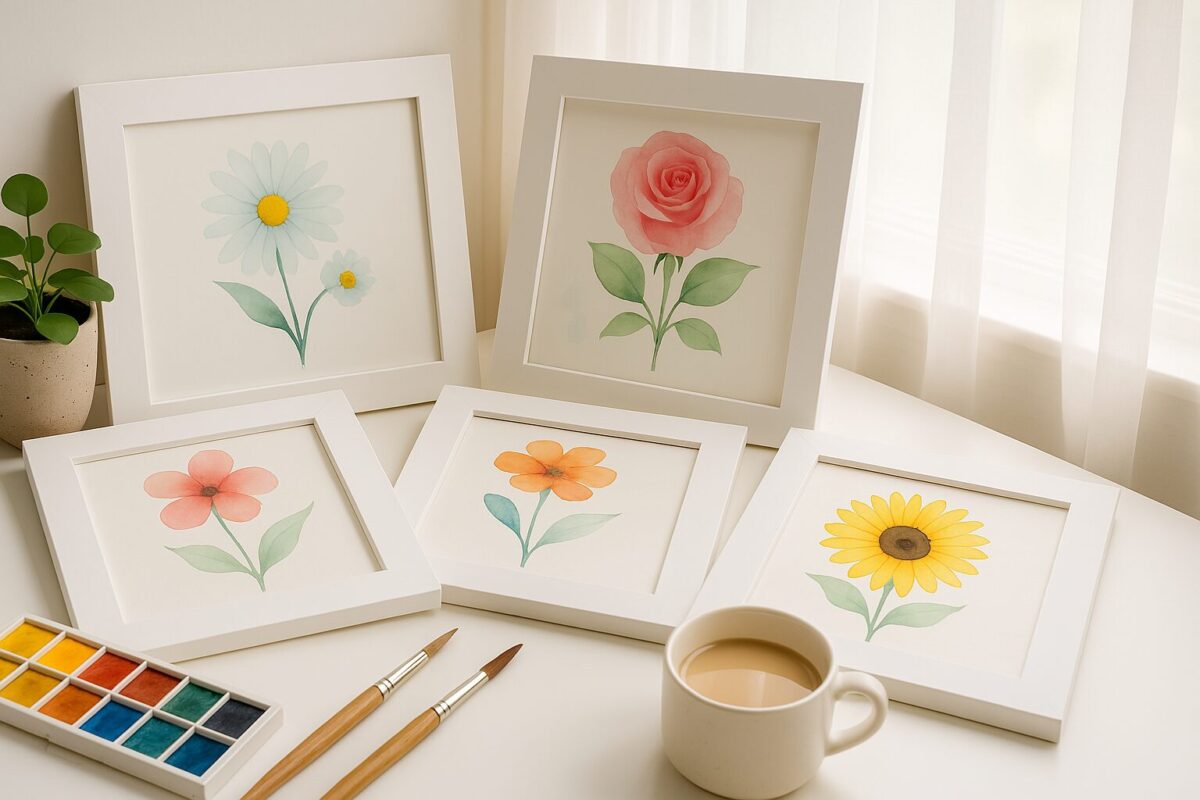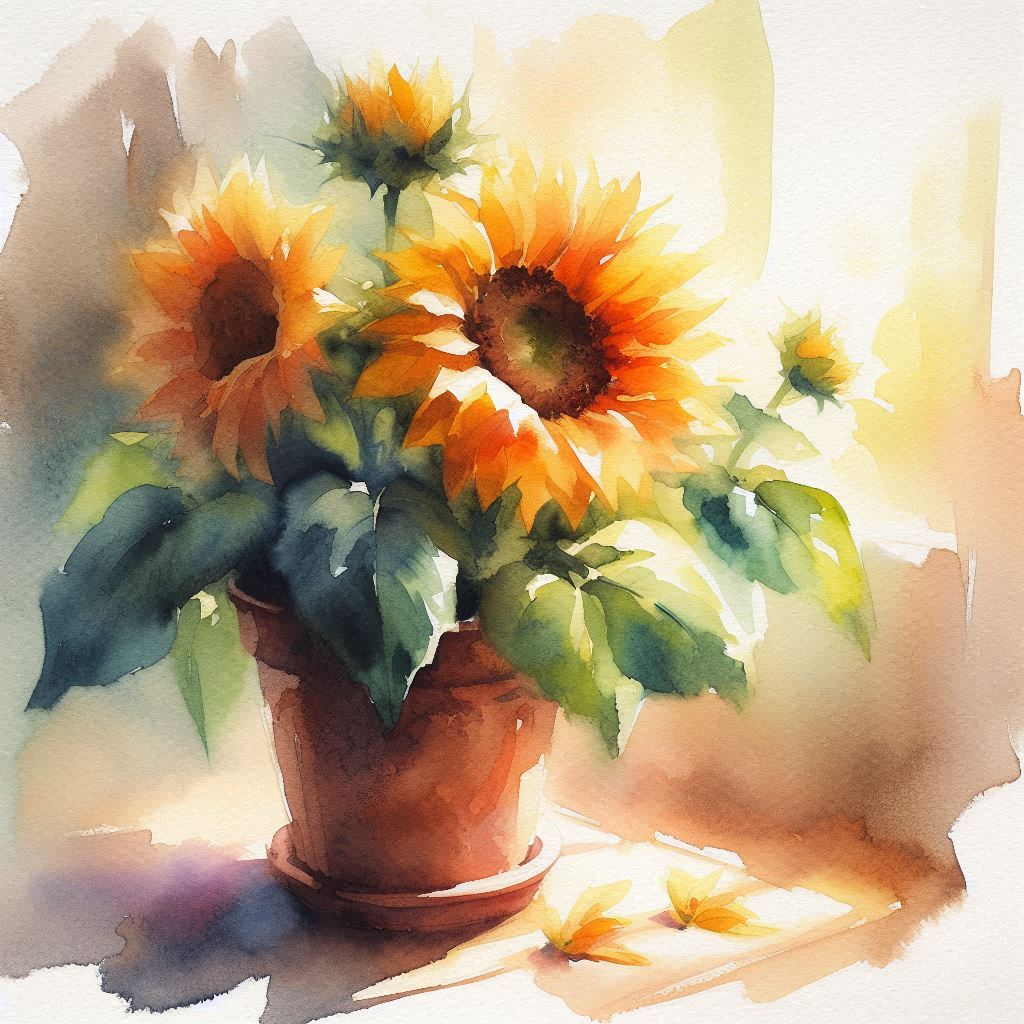Learning to paint easy watercolor flowers for beginners doesn’t have to feel overwhelming. With just a few simple brushstrokes and the right techniques, you can create stunning floral artwork that looks like it came from a professional artist’s studio. Whether you’re picking up a paintbrush for the first time or returning to art after years away, watercolor flowers offer the perfect starting point for your artistic journey.
Key Points Summary
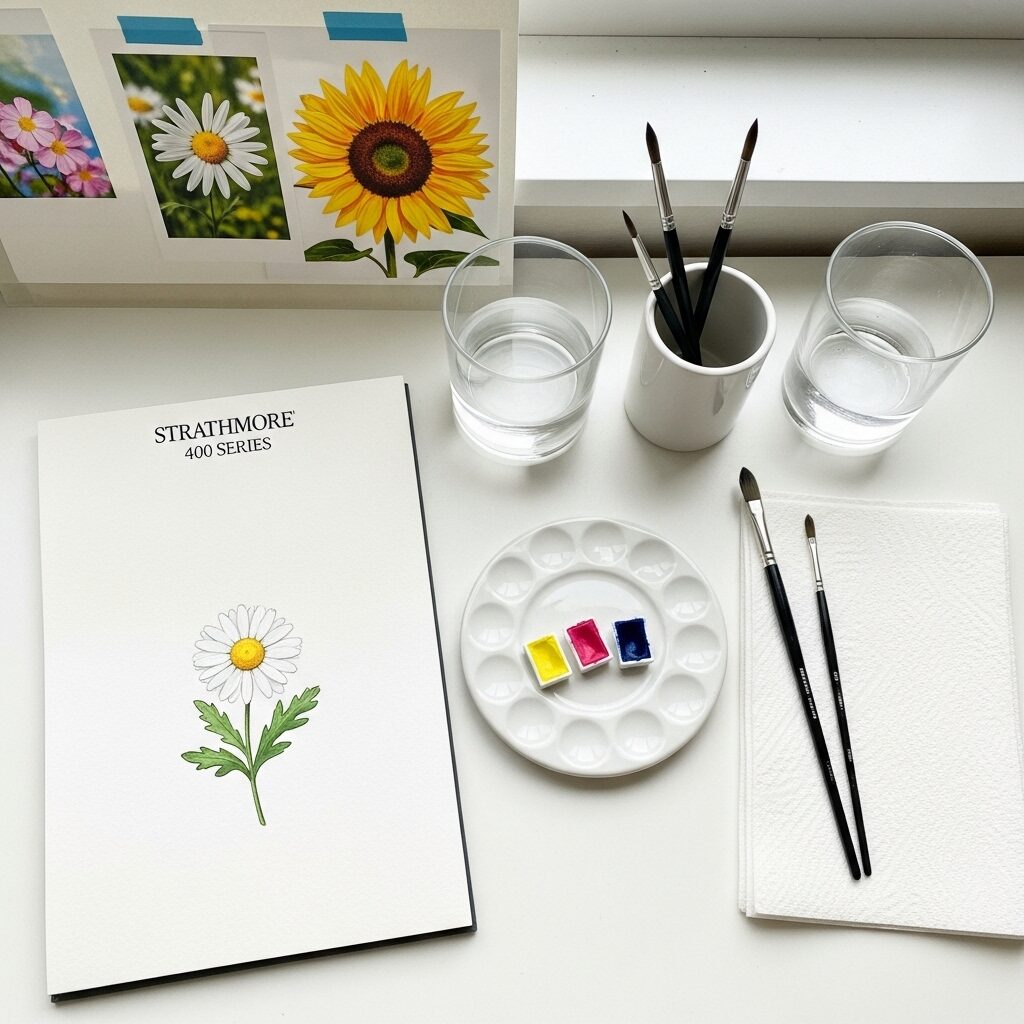
- Master three simple flowers: daisies, roses, and sunflowers using basic techniques
- Learn essential color mixing with just three primary colors
- Discover quick fixes for common beginner mistakes
- Get budget-friendly supply recommendations that won’t break the bank
- Transform your paintings into sellable art pieces
Why Watercolor Flowers Are Perfect for New Artists
Watercolor flowers make ideal first subjects because they’re naturally forgiving. Unlike precise architectural drawings or realistic portraits, flower petals can be wonky, overlapping, or slightly uneven – and they’ll still look beautiful and natural. This built-in forgiveness means you can focus on learning basic techniques without worrying about perfection.
The transparent nature of watercolor paint perfectly mimics how light passes through real flower petals, creating that magical, luminous quality that makes watercolor florals so appealing. Plus, you can complete a single flower in just 10-15 minutes, giving you immediate satisfaction and encouraging you to keep practicing.
According to recent search data, tutorials for easy watercolor flowers for beginners are among the most sought-after art content online, with thousands of people searching for simple floral painting techniques every month.
Essential Supplies: Budget-Friendly Options That Work
You don’t need expensive art supplies to create beautiful watercolor flowers. Here’s what you’ll need to get started:

Paper
- Budget option: Canson XL Mixed Media paper (140 lb)
- Better choice: Strathmore 400 Series Watercolor Paper
- Pro tip: Avoid thin paper that warps when wet
For detailed guidance on selecting the right paper, check out our comprehensive guide on choosing watercolor paper pads.
Brushes
You only need two brushes to start:
- Round brush (size 6-8): For petals and detail work
- Flat brush (1/4 inch): For leaves and background washes
Learn more about selecting quality brushes in our best paint brushes for beginners guide.
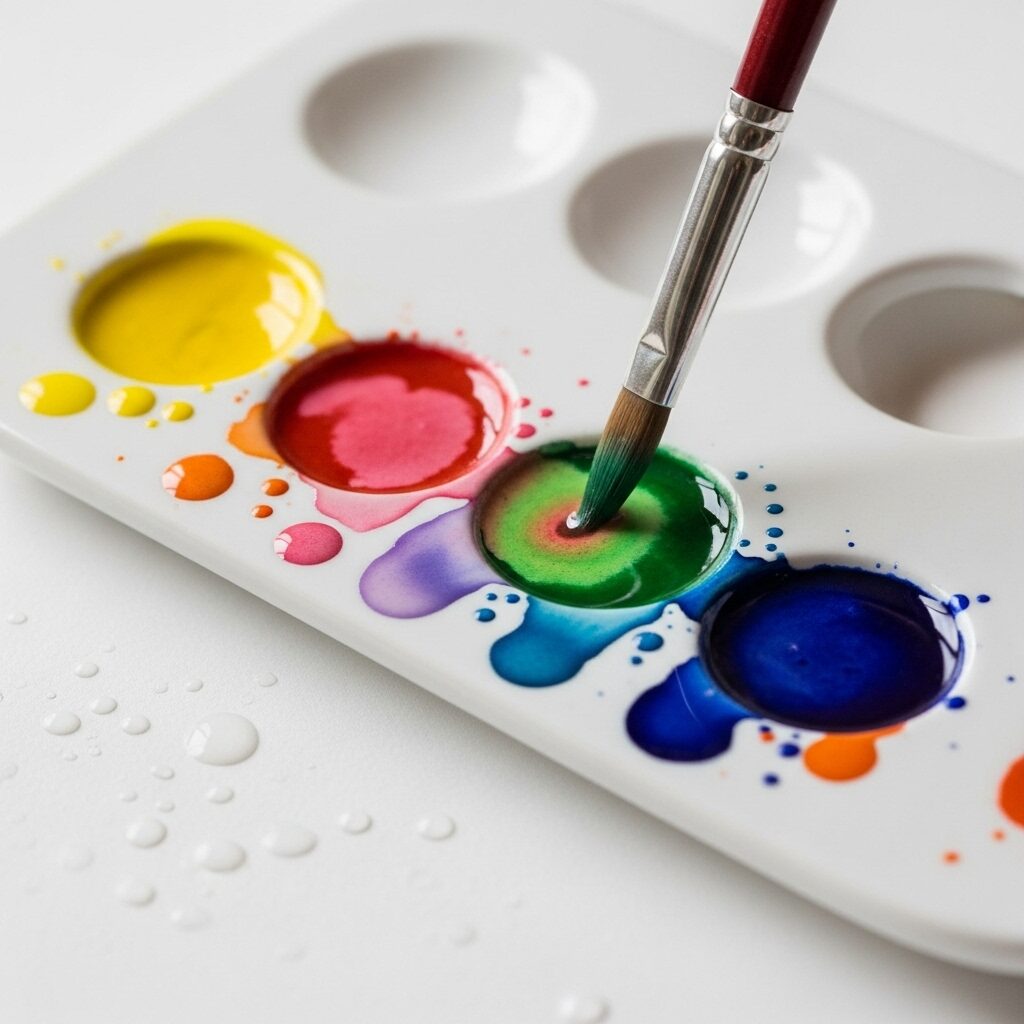
Paints
Start with these three primary colors:
- Lemon Yellow: Bright, clean yellow
- Quinacridone Rose: A clear, vibrant pink-red
- Phthalo Blue: Intense, transparent blue
These three colors can mix to create almost any flower color you need. For more information about different paint types, explore our complete guide to art mediums.
Color Theory Made Simple
Understanding basic color mixing will transform your flower paintings from amateur to impressive. Here’s what you need to know:
Primary Color Combinations
| Flower Color | Paint Mix | Usage |
|---|---|---|
| Soft Pink | Quinacridone Rose + water | Rose petals, cherry blossoms |
| Sunny Yellow | Lemon Yellow + tiny bit of Phthalo Blue | Sunflower centers, daffodils |
| Lavender | Quinacridone Rose + Phthalo Blue | Lilacs, purple flowers |
| Leaf Green | Lemon Yellow + Phthalo Blue | Stems, leaves, foliage |
The Secret to Natural-Looking Colors
Real flowers aren’t pure, bright colors. They have subtle variations and muted tones. To create realistic flower colors, always add a tiny amount of the complementary color to “gray down” your mix. For example, add a speck of Quinacridone Rose to your greens to make them look more natural.
Step-by-Step: Three Easy Watercolor Flowers for Beginners
1. Simple Daisy (Perfect First Flower)
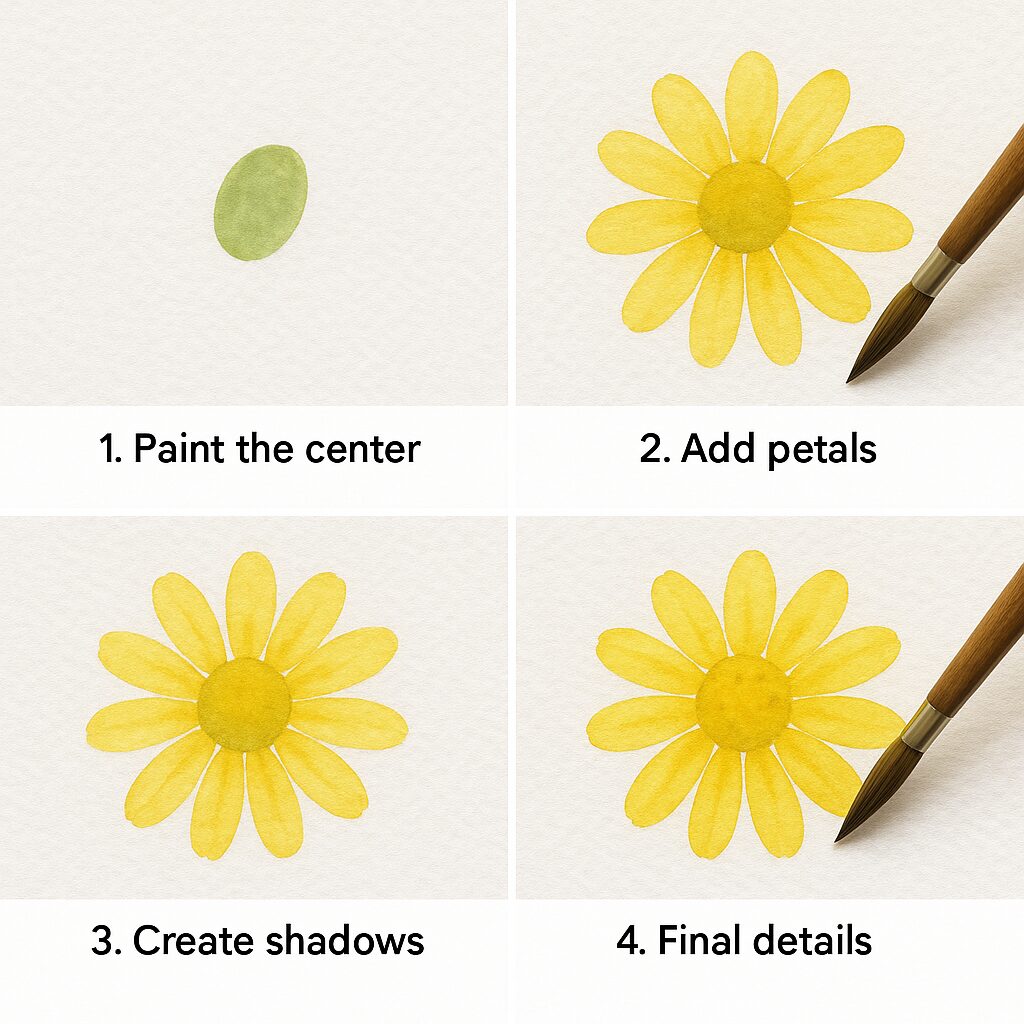
Time needed: 5 minutes Difficulty: Beginner
Steps:
- Paint the center: Use your flat brush to paint a small oval with Lemon Yellow mixed with a tiny bit of Phthalo Blue (creates soft green)
- Add petals: With your round brush, paint simple oval shapes radiating from the center using pure Lemon Yellow
- Create shadows: While still damp, drop in a slightly darker yellow at the base of each petal
- Final details: Once dry, add tiny dots of orange-yellow to the center with your brush tip
Pro tip: Don’t worry if your petals aren’t perfect – real daisies have irregular petals too!
2. Loose Watercolor Rose
Time needed: 8 minutes Difficulty: Beginner-Intermediate
“The key to a beautiful watercolor rose is embracing the ‘happy accidents’ – those unexpected bleeds and blends often create the most realistic petal textures.”
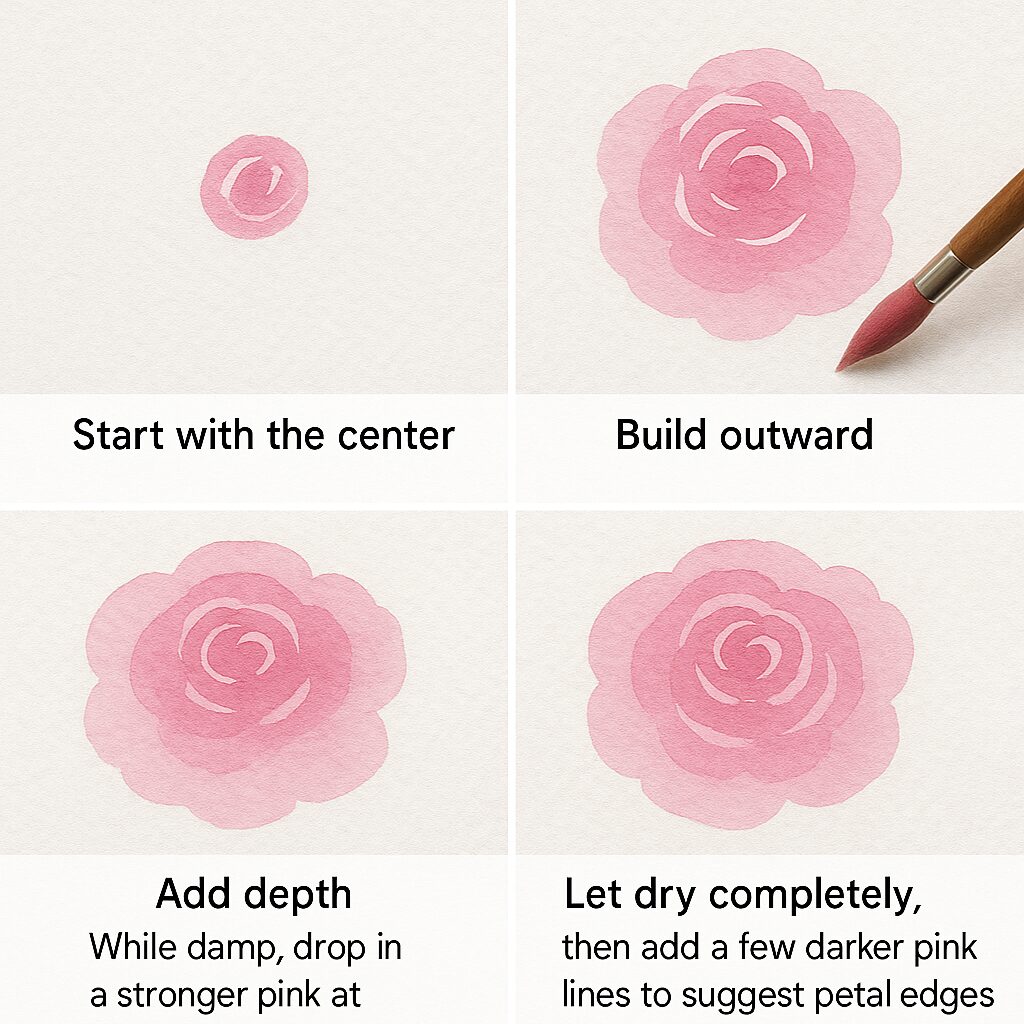
Steps:
- Start with the center: Paint a small spiral shape with diluted Quinacridone Rose
- Build outward: Add curved petal shapes around the center, making each layer lighter by adding more water
- Add depth: While damp, drop in a stronger pink at the base of each petal section
- Final touch: Let dry completely, then add a few darker pink lines to suggest petal edges
3. Cheerful Sunflower
Time needed: 10 minutes Difficulty: Beginner-Intermediate
Steps:
- Paint the center: Create a dark brown circle using Quinacridone Rose + Phthalo Blue
- Add texture: While wet, drop in pure Lemon Yellow around the edges
- Create petals: Paint long, pointed petal shapes with Lemon Yellow, varying the length
- Add dimension: Paint a few petals with Lemon Yellow + tiny bit of Quinacridone Rose for warmer tones
- Final details: Once dry, add small brown dots to the center for seeds
Quick Fixes for Common Beginner Mistakes
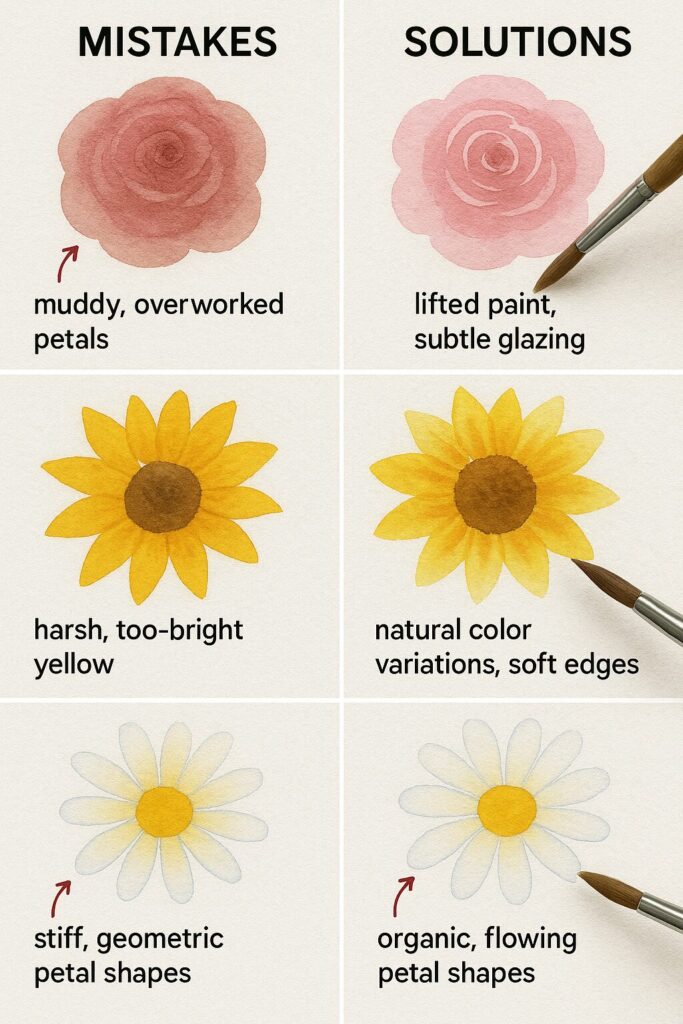
Even experienced artists make mistakes, but watercolor is surprisingly forgiving if you know these rescue techniques:
Problem: Muddy, Overworked Petals
Solution:
- Immediately blot with a clean, dry brush or paper towel
- Let the area dry completely
- Paint over with a transparent glaze of clean water and a hint of yellow to unify the color
Problem: Paint Dried Too Fast
Solution:
- Work in smaller sections
- Keep a spray bottle nearby to mist your palette
- Use slightly more water in your paint mixtures
Problem: Colors Look Too Bright
Solution:
- Mix a tiny amount of the complementary color into your bright paint
- Add a subtle gray wash over the entire painting when dry
For more comprehensive troubleshooting, read our guide on fixing painting mistakes.
Turning Your Flower Paintings Into Art
Once you’ve mastered these basic techniques, you can create beautiful floral compositions:
Composition Tips
- Rule of thirds: Place your main flower off-center for more dynamic compositions
- Vary sizes: Mix large, medium, and small flowers for visual interest
- Leave white space: Don’t fill every inch – empty space makes your flowers “breathe”
Learn more about creating compelling compositions in our essential elements of composition guide.
Adding Backgrounds
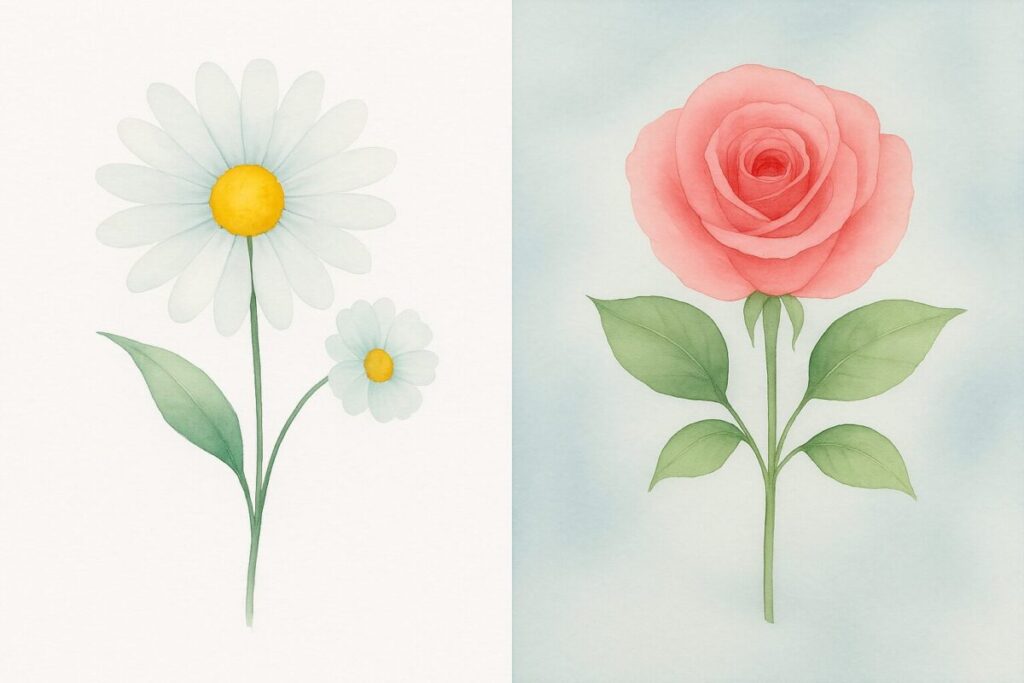
Simple background techniques can elevate your flower paintings:
- Wet-on-wet wash: Paint clean water behind your flowers, then drop in very diluted color
- Splatter texture: Use an old toothbrush to create subtle texture
- Gradient wash: Paint from light to dark or warm to cool across the background
Building Your Skills: What’s Next?
As you become comfortable with these basic flower techniques, consider these next steps:
- Explore transparency techniques: Learn to layer colors for depth in our mastering watercolor transparency guide
- Study light and shadow: Understand how light affects flower forms with mastering impressionism light techniques
- Try botanical illustration: Combine watercolor with pen and ink for detailed flower studies
Recommended YouTube Tutorial
Sharing and Selling Your Watercolor Flowers
Your beginner flower paintings might be better than you think! Here’s how to share and potentially sell your work:
Digital Sharing
- Photograph your paintings in natural light
- Use our recommended free stock photos for artists for social media backgrounds
- Share on Instagram with hashtags like #watercolorflowers #beginnerartist #floralpainting
Selling Options
- Etsy: Perfect for small original paintings
- Print-on-demand: Turn your art into products like mugs, cards, or prints
- Local art fairs: Start small with community events
Use our art price calculator to determine fair pricing for your work.
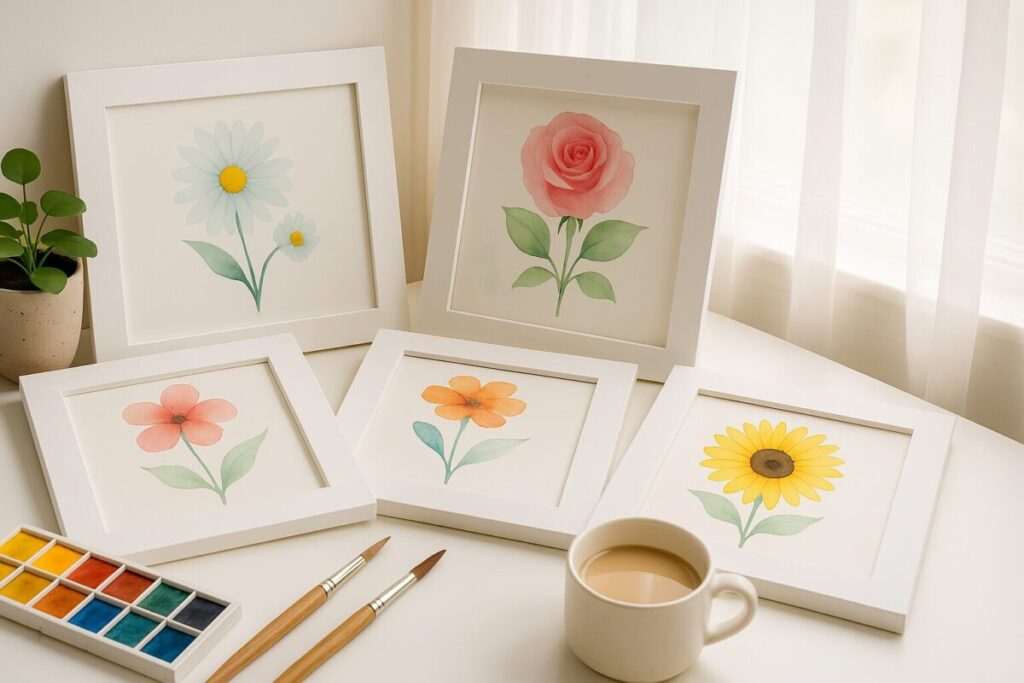
Frequently Asked Questions
Q: Can I use regular copy paper for watercolor flowers? A: While you can practice on copy paper, it will warp and the colors won’t look as vibrant. Invest in proper watercolor paper – even student-grade paper will give you much better results.
Q: How long should I wait between layers? A: Test with your finger – if the paper feels cool to the touch, it’s still damp. For most techniques, wait 3-5 minutes, or use a hair dryer to speed up drying time. Learn more in our how to make paint dry faster guide.
Q: My flowers look too stiff – how can I make them more natural? A: Try painting faster and with more water. Stiff-looking flowers often result from overworking the paint or not using enough water. Embrace the flowing, organic nature of watercolor.
Q: What’s the best way to practice flower painting? A: Start with simple shapes and gradually add complexity. Paint the same flower multiple times – each version will teach you something new. Consider taking inspiration from real flowers or photos rather than trying to copy other paintings exactly.
Q: Can I mix watercolor with other mediums? A: Absolutely! Watercolor works beautifully with colored pencils, ink, and even gouache. Once you’re comfortable with basic watercolor, experiment with mixed media techniques.
Final Thoughts
Mastering easy watercolor flowers for beginners is about embracing the medium’s natural beauty and learning to work with its flowing, unpredictable nature. Remember that every professional artist started exactly where you are now – with simple exercises and lots of practice. The three flowers in this guide will give you a solid foundation to build upon, and with regular practice, you’ll be amazed at how quickly your skills develop.
Don’t be discouraged if your first attempts don’t match your expectations. Watercolor flower painting is a journey, not a destination. Each painting teaches you something new about color, water control, and artistic expression. Keep practicing these fundamental techniques, and soon you’ll be creating easy watercolor flowers for beginners that are anything but basic.
Additional Resource
- Watercolor Painting Techniques – Artist Network
- Color Theory for Artists – Adobe
- Jackson’s Art Supplies – Watercolor Guide
- Strathmore Paper Guide
- Botanical Illustration Society

